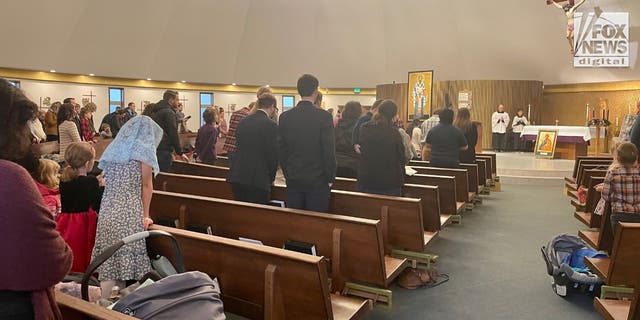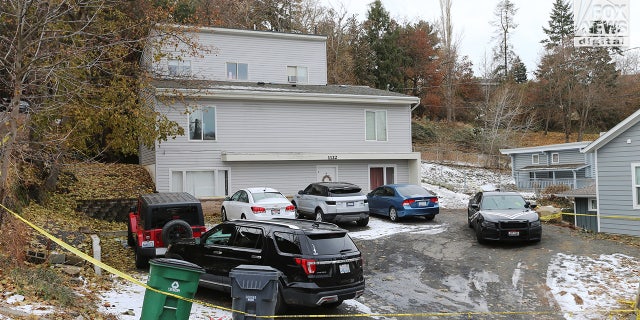NEWYou can now listen to Fox News articles!
Bryan Kohberger’s arrest has raised lots of questions about the Idaho quadruple murders. But this speculation focuses on two key points without any solid information: What’s the motive? And where’s the murder weapon? Yet there is one source of information we do have: the arrest warrant affidavit of Corporal Brett Payne.
While still speculative, a close read of that document raises some important points.
1. Why didn’t D.M. call 911 after seeing the perp? (p. 4)
This has been the most remarked-upon aspect of the affidavit. Adding to it is the fact that even seven hours later, D.M.’s first call was not to 911, but to friends, who arrived and apparently participated in the 911 call.
IDAHO MURDERS AMENDED GAG ORDER NOW SILENCES ATTORNEYS FOR VICTIMS AND WITNESSES
What has been overlooked has been the strongly positive aspect of D.M.’s eyewitness encounter. Her description of who she saw in the house undoubtedly helped inform the focus on Kohberger once his car was found. And as such informed the subsequent search warrants done on his phone’s movements and, likely, his social media, cloud account and other digital platforms.

Parishioners gather in Moscow, Idaho, on Thanksgiving weekend to pray for the victims of the slaying. (Derek Shook for Fox News Digital)
2. How did “reviews of forensic downloads of records from B.F. and D.M.’s phones” lead investigators to believe the homicides occurred between 4:00 a.m. and 4:25 am? (p. 5)
Presumably, both surviving roommates consented to a dump of their phones for the night in question and, likely, the morning after. What content there helped investigators fix the time of death?
3. Why the term, “Suspect Vehicle 1” as opposed to simply, “Suspect Vehicle?” (p. 5)
Is there a second car? Or is this just a vestige of language from earlier in the investigation?
4. Where was the latent shoe print found – and in what direction was it pointing? (p. 5)
This matters because it could well indicate the killer’s path through the house – and therefore, the order of the murders and even potentially the main “target.” Also, the print wasn’t discovered until the second crime scene team used a special liquid that illuminates blood. (It was a latent print, not a patent [visible] print.) With so much blood at a scene the police have described as graphic, it begs the question: Did the perpetrator attempt to clean up after the crime?
5. Why, if Kohberger’s car was discovered by Washington State University police on November 29, did the task force allow him to leave town two weeks later? (p. 5)
This is a big one. Consider: Kohberger matched D.M.’s description of the perp, owned a white Elantra of the correct year, and the car was missing a front plate, just like the car in the videos police pulled. Pretty unique. Why not get a search warrant and do a “sneak-and-peek” in the car at that point, to check for DNA or blood? Why not get Kohberger’s DNA from his garbage in Pullman at that point? Was the task force simply too overburdened? As it is, Kohberger, an accused quadruple murderer, ended up at-large for another month.
While the task force undeniably did a masterful job on the case, this one is puzzling.
6. Why were the car stops in Indiana done? (p. 11)
The reported reason has been to check Kohberger’s hands for cuts. But clearly, more than a month after the murders and with the task force already in possession of some very solid evidence against him, the risk/reward ratio for this tactic was poor. Would his cuts not have already healed? Would the stop not tip him off to the cops’ focus?
As it is, Kohberger began wearing gloves outside his home back in Pennsylvania, and reportedly made efforts to hide his garbage among his neighbor’s. As this appears to be the only contact he had with the police before his arrest, clearly, the stops raised him up. Is there another reason this call was made?
7. Why did Kohberger reportedly take such a circuitous route from the crime scene? (p. 15)
Was he attempting to avoid leaving a video trail of his car’s movements? Had he used his school’s access to local video feeds in planning it? Or did he ditch the murder weapon somewhere along the way? It is interesting to note that the circuitous route he took later in the day of the murders brought him right up to the Snake River.
CLICK HERE TO GET THE OPINION NEWSLETTER
8. Why did Kohberger’s phone ping in Moscow at one point, when the affidavit says he wasn’t there? (p. 15)
Was he simply near to the border of the two cell tower zones? Or did someone have his phone for some reason?

Law enforcement vehicles on the scene of the Idaho quadruple murder. (Derek Shook for Fox News Digital)
9. Why was Kohberger in Johnson, Idaho, later in the day after the murders? And why did his phone “stop reporting” there? (p. 18)
Another big one. Johnson, Idaho, is a remote quarry area roughly two hours from Moscow. Yet his phone reported there from 5:32 to 5:36 pm after the murders – then went dead until 8:30 pm. Did he ditch evidence out there?
Further: What does this paragraph’s concluding sentence mean: “That is consistent with the 8458 Phone being [in] the area that the 8458 Phone traveled in the hours immediately following the suspected time the homicides occurred.” Despite the typo (I supplied the missing, “in”), this is a very mysterious, opaque sentence. Was he in Johnson twice after the murders?
CLICK HERE TO GET THE FOX NEWS APP
10. Why a six-month continuance?
With all the evidence in the affidavit – and likely more already gathered – a six-month delay for a simple probable cause hearing is highly unusual. Understand that this doesn’t mean the trial begins in six months. After this hearing, there will be the arraignment (where he will plead), a likely motion to change venue, the discovery process, evidentiary motions and hearings, jury selection, a trial, and then (potentially) a sentencing. At this rate, the process could take years. Why did the prosecution and judge so readily agree? Are there plea negotiations going on? Does the prosecution need the time to search for the weapon? To investigate possible prior bad acts?
None of these observations, to my mind, damages the case against Kohberger – I don’t see any of them raising reasonable doubt. But going forward, it will be answers to the above that will provide a fuller picture of the prosecution’s case.
CLICK HERE TO READ MORE FROM PAUL MAURO
